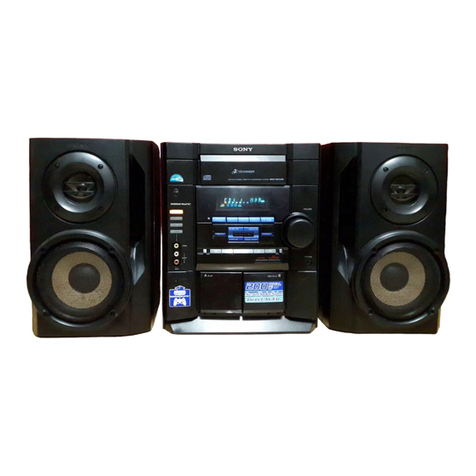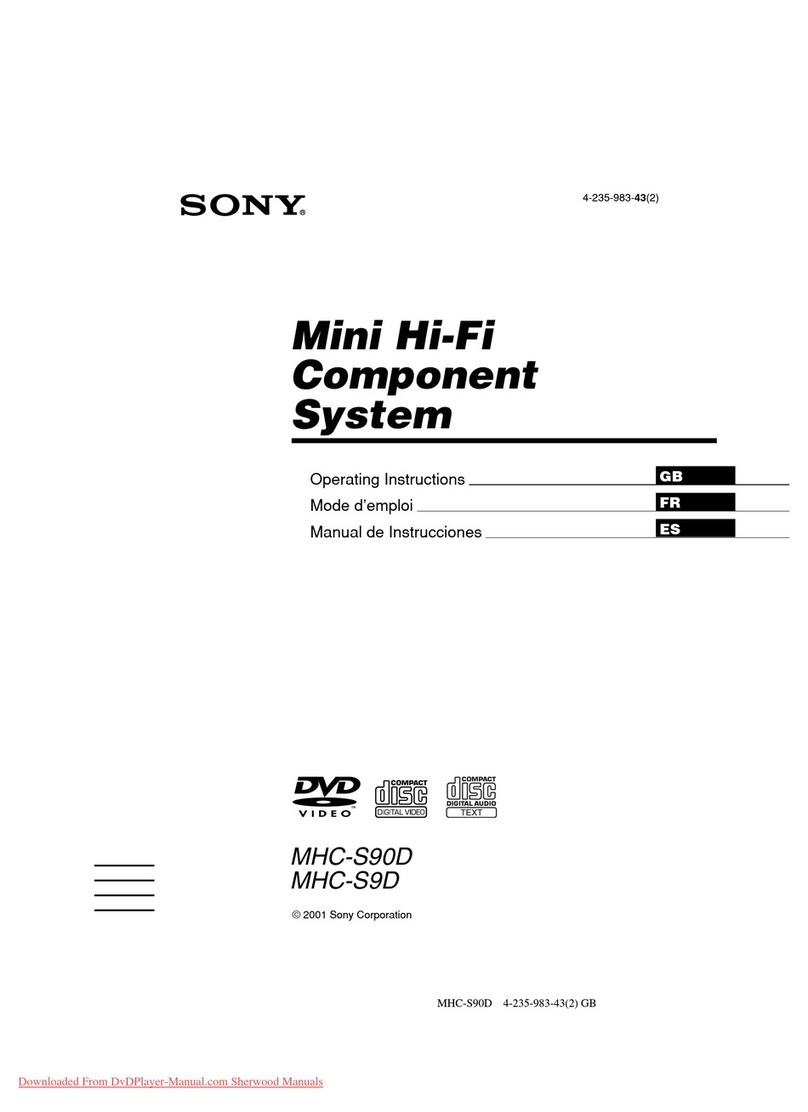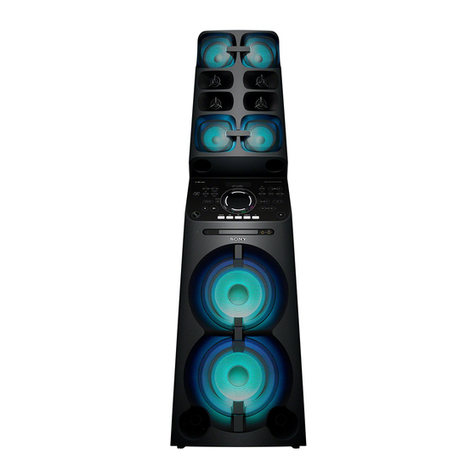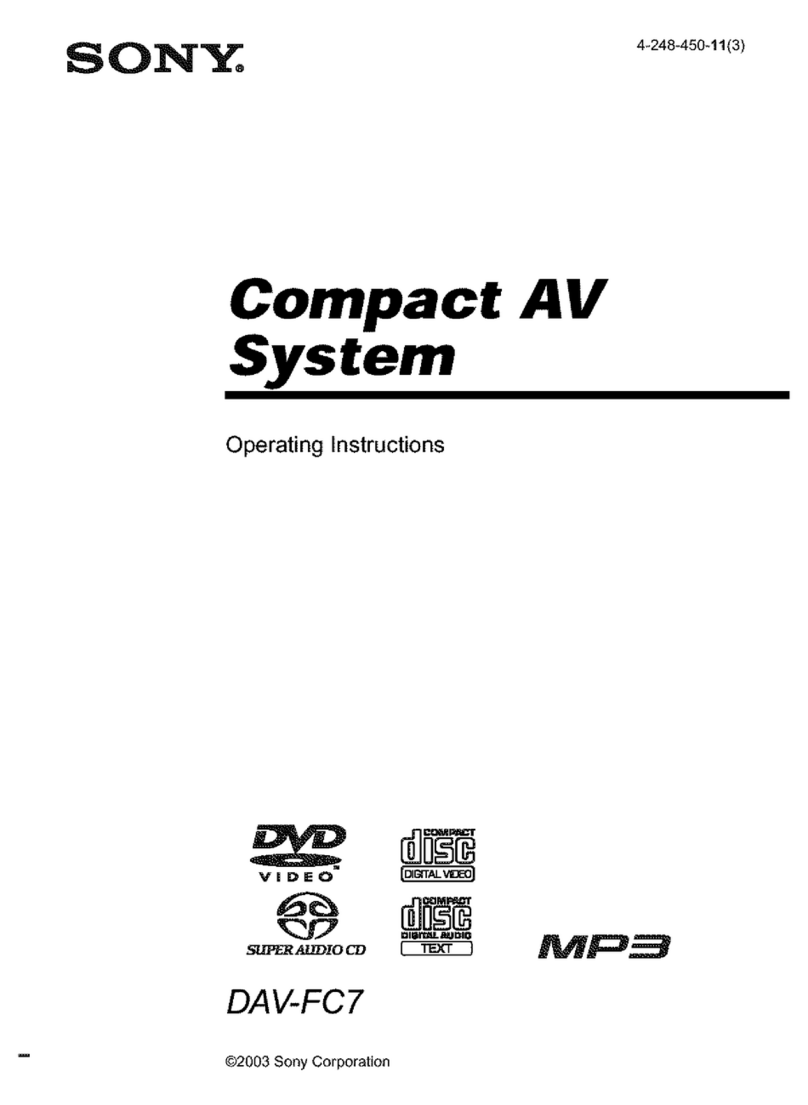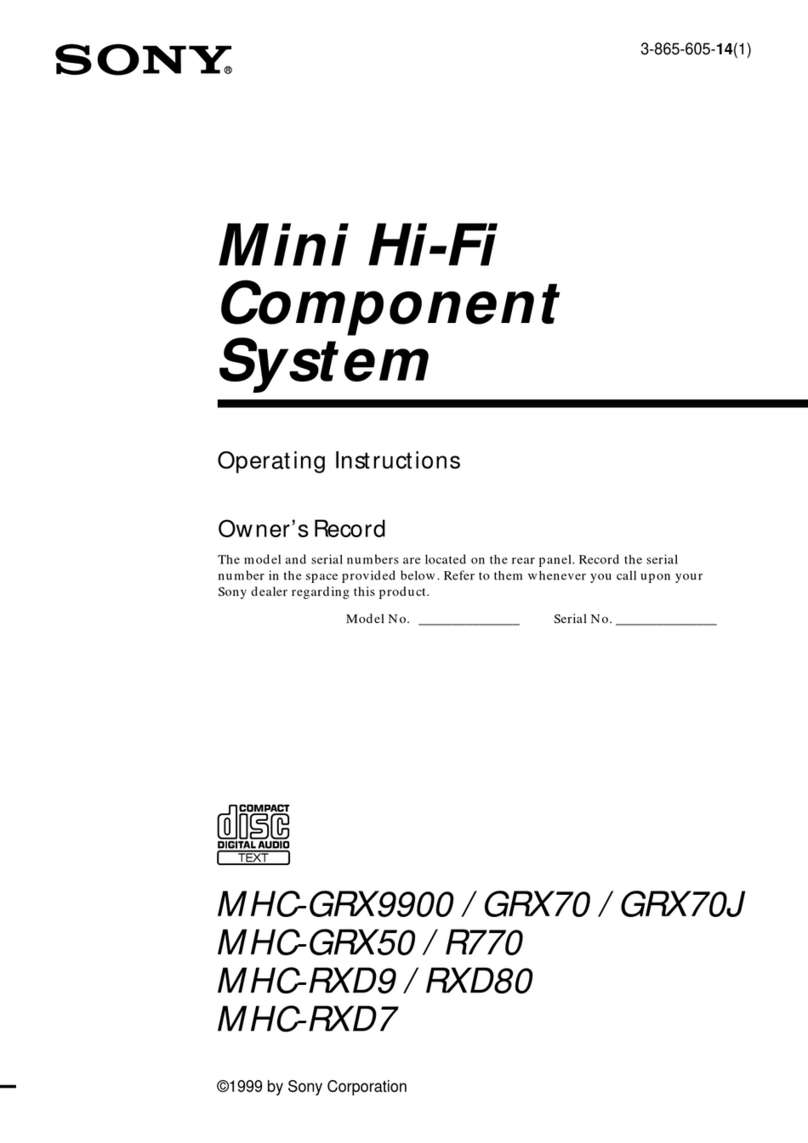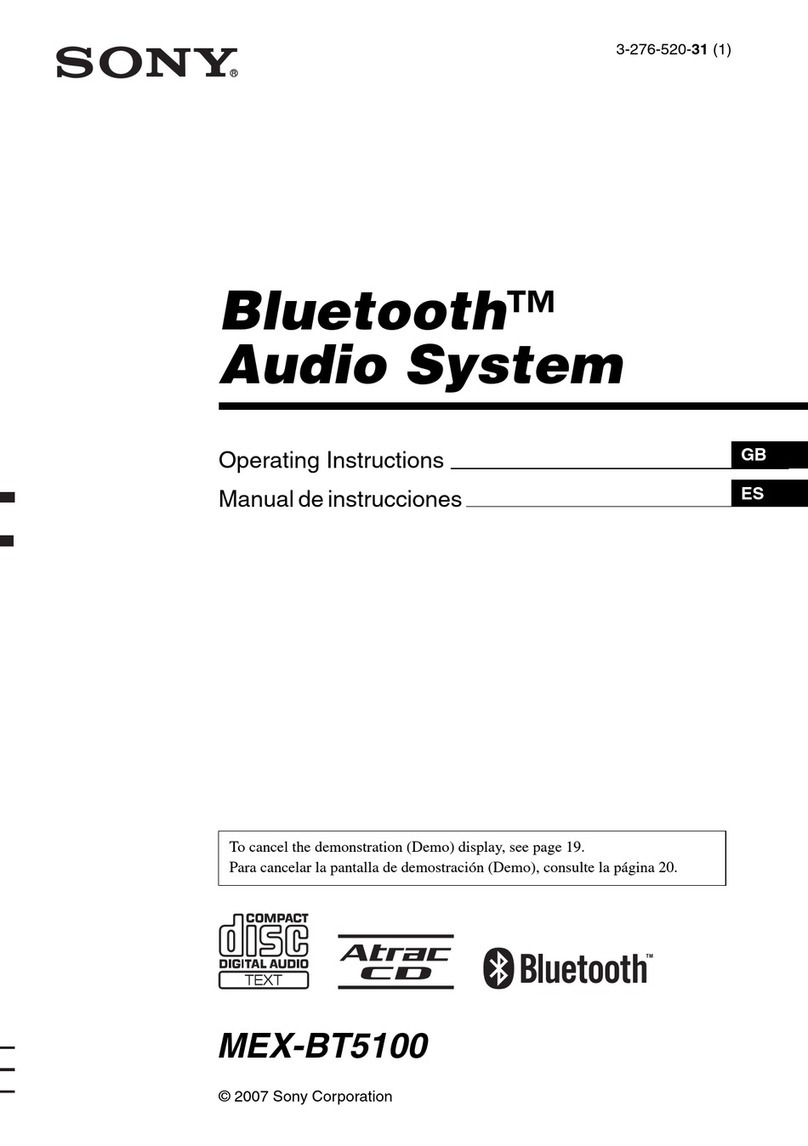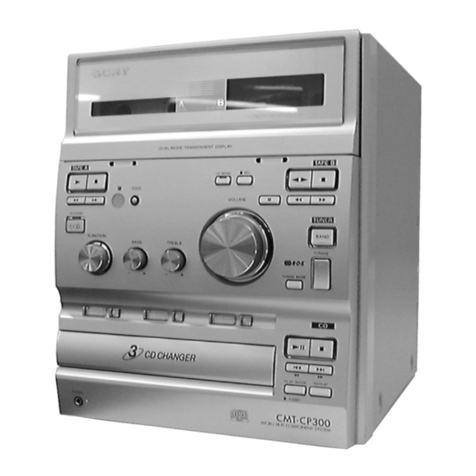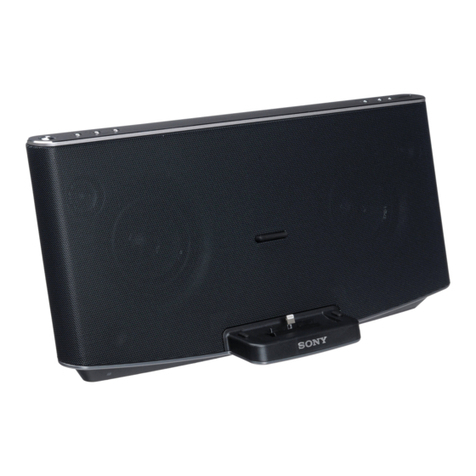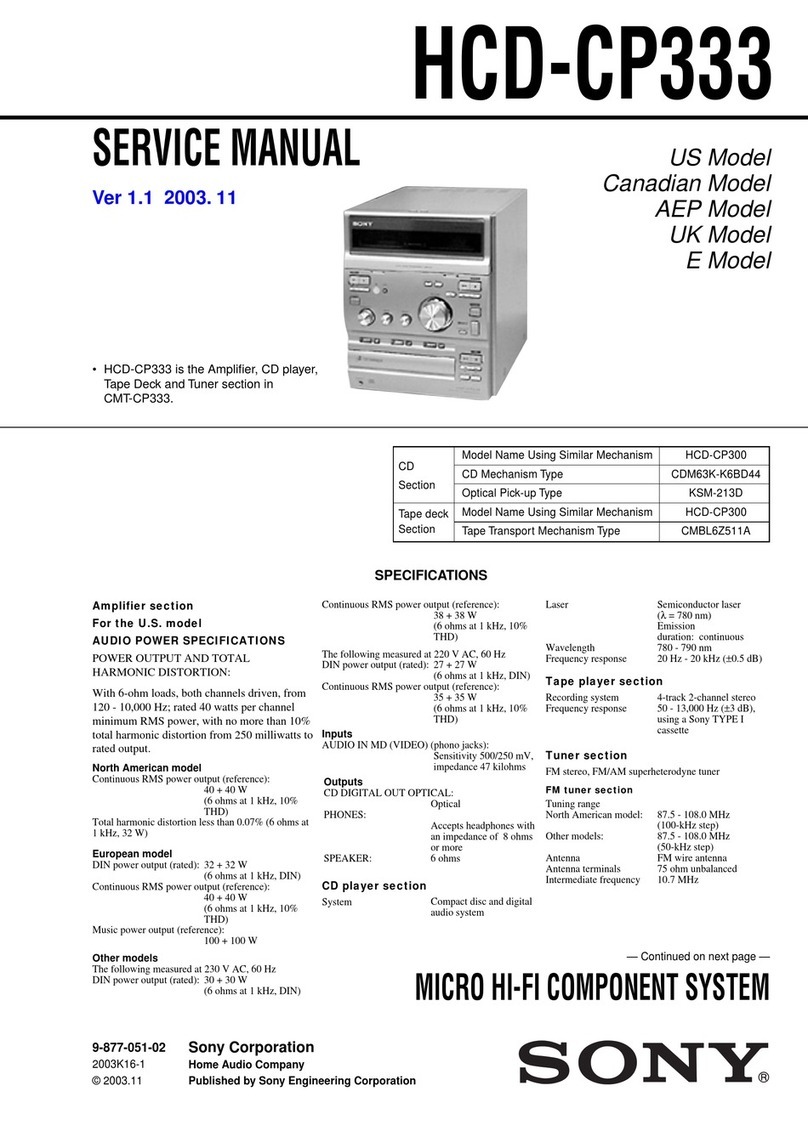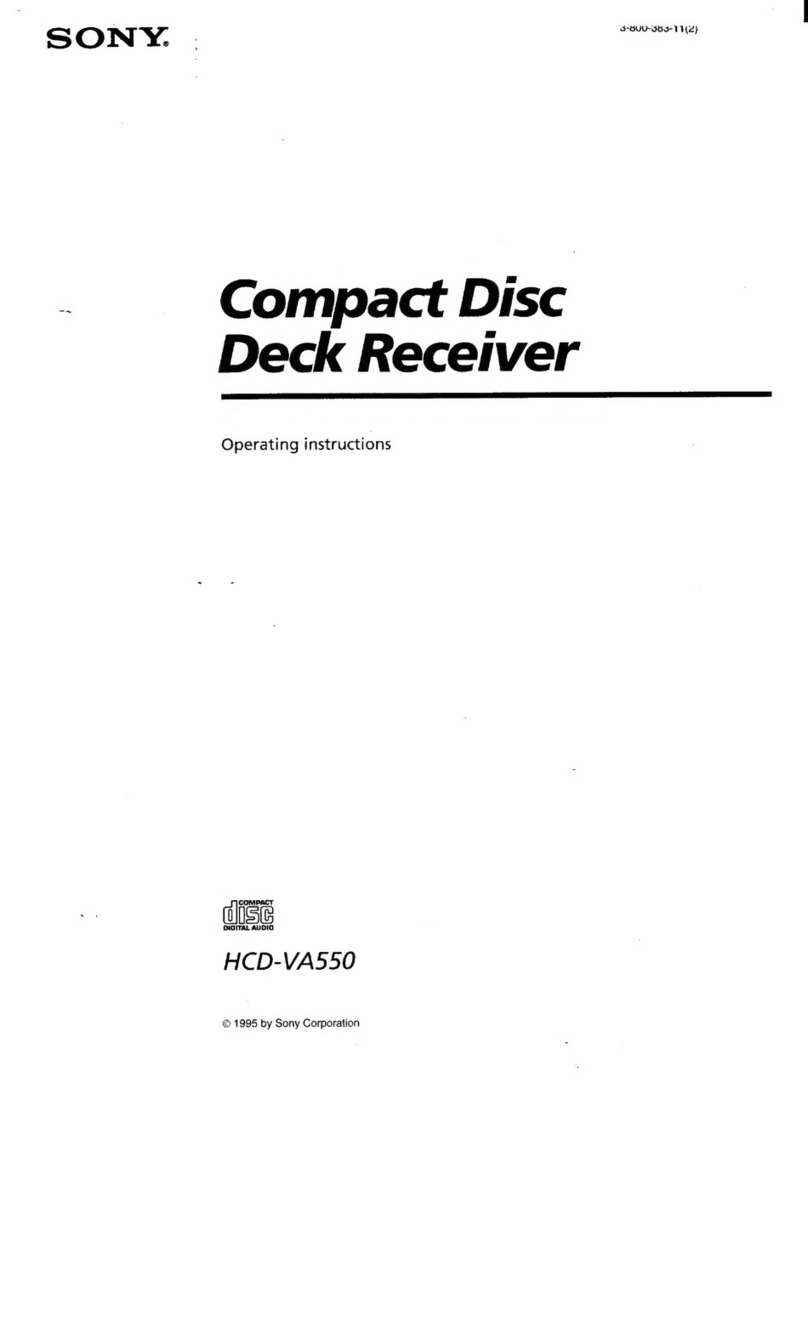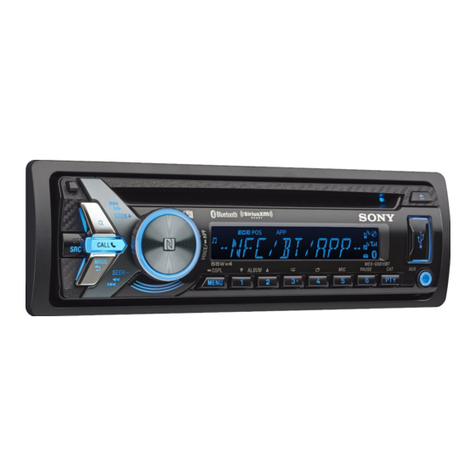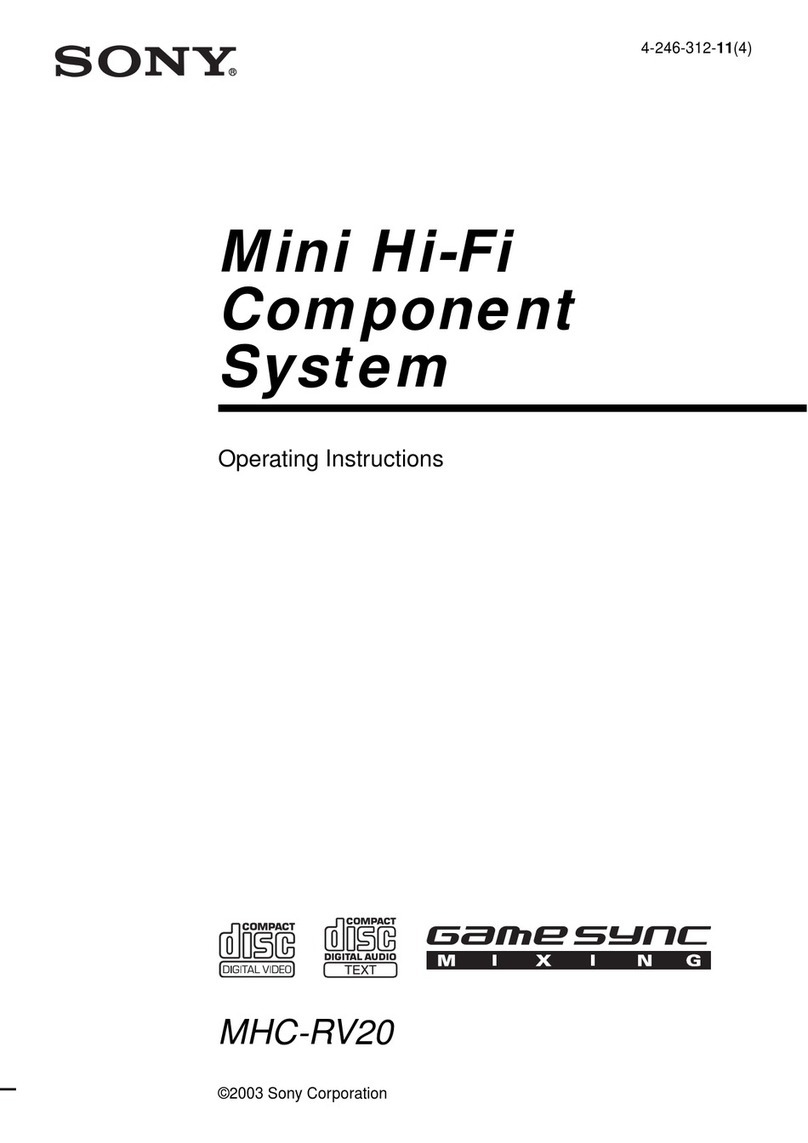2
HCD-GSX100W
1. SERVICING NOTES ······················································· 4
2. GENERAL ·········································································· 5
3. DISASSEMBLY ································································ 7
3-1. Top Cabinet ··································································· 8
3-2. Front Cabi ASSY ··························································· 8
3-3. Back Panel ASSY ·························································· 9
3-4. Detect Board, Main Board············································· 9
3-5. Amp Board ·································································· 10
3-6. Power Board ································································ 10
3-7. Holder (LED-S), Middle (R), Power Bracket ············· 11
3-8. CD Mechanism Deck (CDM64C-K1BD47B) ············ 11
3-9. Base Unit (BU-K1BD47B),
D-Sensor (OUT) Board, T-Sensor Board ···················· 12
3-10. D-Sensor (IN) Board, Load SW Board,
LT Motor Board ··························································· 12
3-11. CD LED Board ···························································· 13
3-12. BU Holder ASSY ························································ 13
3-13. CD Board, Optical Pick-up (KSM-213BFN) ·············· 14
3-14. RX-Base PC Board ASSY,
Mechanical Deck (CMAL1Z234A), Cassette Holder · 14
3-15. Game Board, H/P Board ·············································· 15
3-16. Display Board ······························································ 15
3-17. KEY (2) Board, CD Sync Button ································ 16
3-18. KEY Board, Wireless Board ········································ 16
4. TEST MODE ···································································· 17
5. MECHANICAL ADJUSTMENTS ····························· 18
6. ELECTRICAL ADJUSTMENTS ······························ 18
7. DIAGRAMS
7-1. Circuit Boards Location ·············································· 22
7-2. Block Diagrams ··························································· 23
– CD Section – ···························································· 23
– Tuner/Tape Deck Section – ······································ 24
– INPUT/EVR Section – ············································· 25
– Amp Section – ·························································· 26
– Display/Power Supply Section – ······························ 27
7-3. Printed Wiring Board – CD Section – ························ 28
7-4. Schematic Diagram – CD Section – ··························· 29
7-5. Printed Wiring Board
– CD Motor/Sensor Section – ····································· 30
7-6. Schematic Diagram
– CD Motor/Sensor Section – ····································· 31
7-7. Printed Wiring Board – Main Section – ····················· 32
7-8. Schematic Diagram – Main Section (1/3) – ··············· 33
7-9. Schematic Diagram – Main Section (2/3) – ··············· 34
7-10. Schematic Diagram – Main Section (3/3) – ··············· 35
7-11. Printed Wiring Board – Amp Section – ······················ 36
7-12. Schematic Diagram – Amp Section –························· 37
7-13. Printed Wiring Board – Display Section – ················· 38
7-14. Schematic Diagram – Display Section – ···················· 39
7-15. Printed Wiring Board – Key Section – ······················· 40
7-16. Schematic Diagram – Key Section – ·························· 41
7-17. Printed Wiring Board – Power Section – ··················· 42
7-18. Schematic Diagram – Power Section – ······················ 43
7-19. Printed Wiring Board – RX Section – ························ 44
7-20. Schematic Diagram – RX Section – ··························· 45
7-21. IC Block Diagrams ······················································ 46
7-22. IC Pin Function Description ········································ 48
8. EXPLODED VIEWS
8-1. General Section ··························································· 53
8-2. Front Panel Section ····················································· 54
8-3. Chassis Section ···························································· 55
8-4. Mechanism Deck Section-1 (CDM64C-K1BD47B) ··· 56
8-5. Mechanism Deck Section-2 (CDM64C-K1BD47B) ··· 57
8-6. Base Unit Section (BU-K1BD47B) ···························· 58
9. ELECTRICAL PARTS LIST ······································· 59
TABLE OF CONTENTS
Tuner section
FM stereo, FM/AM superheterodyne tuner
FM tuner section
Tuning range 87.5 – 108.0 MHz
Antenna FM lead antenna
Antenna terminals 75 ohms unbalanced
Intermediate frequency 10.7 MHz
AM tuner section
Tuning range 530 – 1,710 kHz
(with the tuning interval set at 10 kHz)
531 – 1,710 kHz
(with the tuning interval set at 9 kHz)
Antenna AM loop antenna, external antenna terminal
Intermediate frequency 450 kHz
Transmitter
Carrier frequency 913.5 – 914.5 MHz
Channel
CHANNEL1: 913.5 MHz
CHANNEL2: 914.0 MHz
CHANNEL3: 914.5 MHz
Modulation FM stereo
Power source DC 9 V: supplied AC power adaptor
(AC-GSX100)
Audio input phono jacks/stereo mini jack
General
Power requirements: 120 V AC, 60 Hz
Power consumption: 170 W
Dimensions (w/h/d) incl. projecting parts and controls Amplifier/Tuner/
Tape/CD section: Approx. 280 x 326 x 490 mm
Transmitter Approx. 136 x 100 x 103 mm
Mass: Approx. 11.5 kg
Transmitter Approx. 146 g
Supplied accessories Remote (1)
size AA (R6) batteries (2)
AM loop antenna (1)
FM lead antenna (1)
Transmitter (1)
AC adaptor (1)
Connecting cord phono
plug-stereo miniplug (1m) (1)
Design and specifications are subject to change without notice.
Ver 1.1 2003.09
